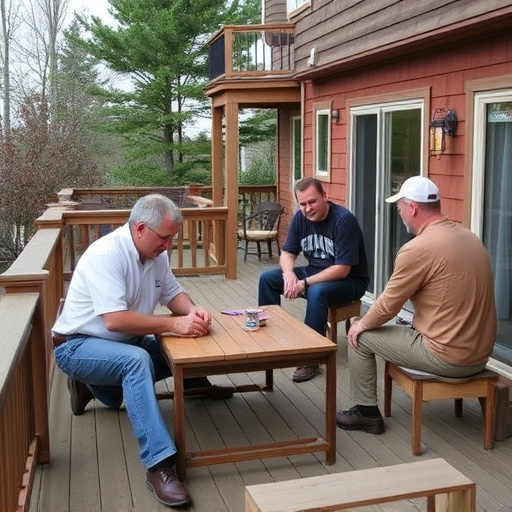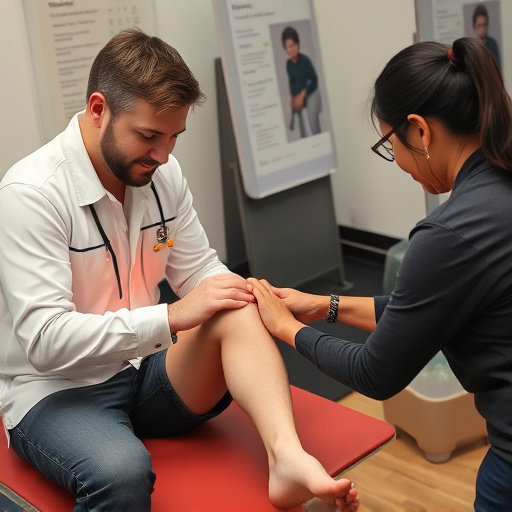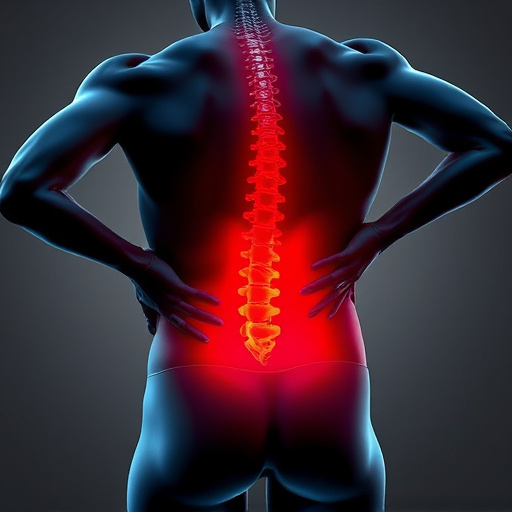Military injury treatment requires a comprehensive, collaborative approach integrating specialized and conventional medicine, physical therapy, chiropractic care, and holistic therapies for effective pain management and mobility restoration. A robust support ecosystem, including access to excellent medical care, tailored networks, and strong social connections, is crucial. Continuous rehabilitation focusing on personalized programs, regular spinal adjustments, and specialized exercises promotes long-term recovery and improved quality of life. Effective reintegration blends medical care, counseling, and vocational assistance, leveraging non-invasive treatment options to minimize risks. Military communities foster supportive environments that empower individuals to overcome challenges and thrive post-injury.
“Long-term military injury treatment requires a multifaceted approach that combines comprehensive care, supportive ecosystems, and effective rehabilitation strategies. This article explores best practices to ensure success in managing and treating service members’ injuries over extended periods. We delve into understanding the unique challenges of military injury treatment, fostering supportive communities, and implementing continuous rehab programs for optimal recovery and successful reintegration. By adopting these practices, we honor our military personnel’s dedication with comprehensive care.”
- Understanding Military Injury Treatment: A Comprehensive Approach
- Building a Supportive Ecosystem for Long-Term Recovery
- Effective Strategies for Continuous Rehabilitation and Reintegration
Understanding Military Injury Treatment: A Comprehensive Approach

Military injury treatment requires a comprehensive approach that considers both the immediate and long-term needs of service members. It’s more than just addressing the physical wounds; it involves a holistic understanding of the soldier’s overall health, mental well-being, and reintegration into civilian life. This includes a multifaceted strategy that often combines medical interventions, rehabilitation techniques, and support services.
A key component in achieving successful military injury treatment is integrating specialized care, such as physical therapy and chiropractic treatment, alongside conventional medicine. Post-injury care should be tailored to the individual’s specific needs, focusing on pain management, restoration of mobility, and strengthening the body to prevent further injuries. This collaborative approach ensures service members receive the best possible care throughout their recovery journey.
Building a Supportive Ecosystem for Long-Term Recovery

Building a supportive ecosystem is paramount for long-term success in military injury treatment. This includes not just access to top-tier medical care but also a network of support systems tailored to each service member’s unique needs. Family, friends, and fellow veterans play a crucial role in fostering a positive environment conducive to recovery. Their encouragement and understanding can significantly enhance motivation and adherence to rehabilitation programs, which are essential for injury rehabilitation and mobility improvement.
Furthermore, integrating with communities that prioritize military wellness and providing resources for functional rehabilitation can create a comprehensive support network. This ecosystem should also encompass therapeutic activities, such as group therapy sessions and adaptive sports, designed to promote mental health alongside physical recovery. By seamlessly blending medical expertise, social support, and holistic therapies, the path to full recovery becomes more navigable, ensuring service members have every opportunity to regain their independence and return to active duty or civilian life with enhanced resilience.
Effective Strategies for Continuous Rehabilitation and Reintegration

Continuous rehabilitation is a cornerstone for long-term military injury treatment success. It involves tailored programs designed to improve physical and mental well-being, addressing specific needs of service members. Essential components include regular spinal adjustments and specialized exercises targeting pain management and mobility enhancement. These strategies foster a holistic recovery, promoting independence and improved quality of life.
Reintegration into civilian or military life requires comprehensive support. Effective programs offer a blend of medical care, counseling, and vocational assistance. Leveraging non-invasive treatment options, such as physical therapy and mind-body practices, can accelerate healing while minimizing risks. By combining these strategies, military communities create a supportive environment that empowers individuals to overcome challenges and thrive in their post-injury lives.
Long-term military injury treatment success hinges on a holistic approach that combines comprehensive understanding, supportive ecosystems, and effective rehabilitation strategies. By integrating these best practices, we can ensure veterans receive the care they deserve, facilitating their continuous recovery and reintegration into civilian life. Prioritizing military injury treatment is not just about healing physical wounds; it’s about nurturing the whole person to achieve lasting well-being.














